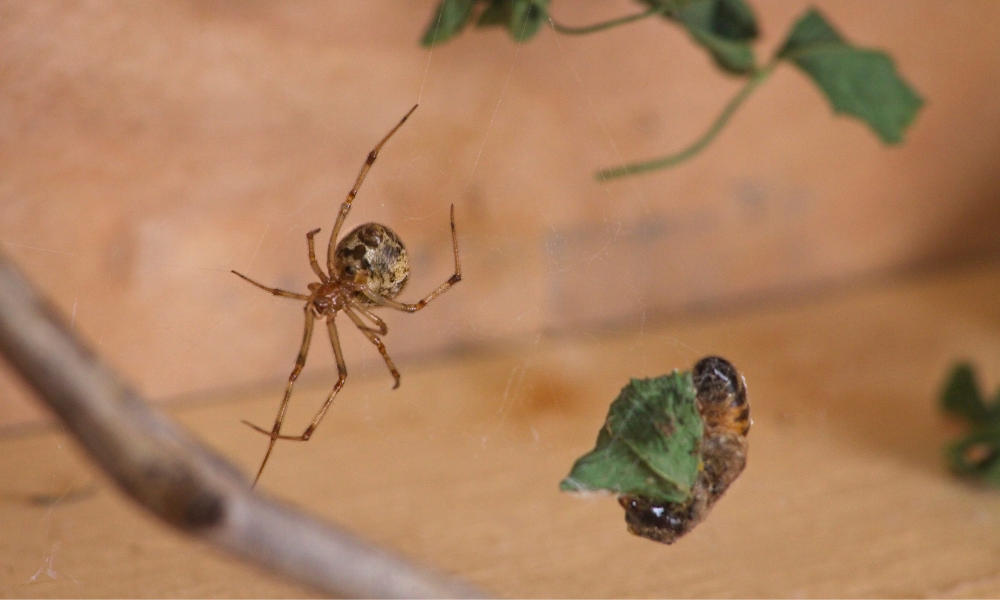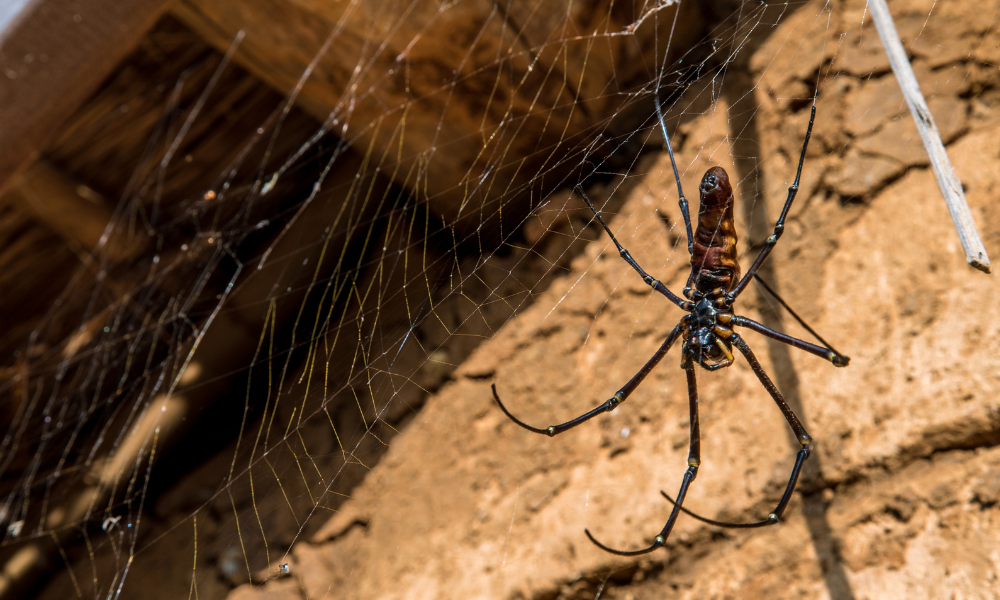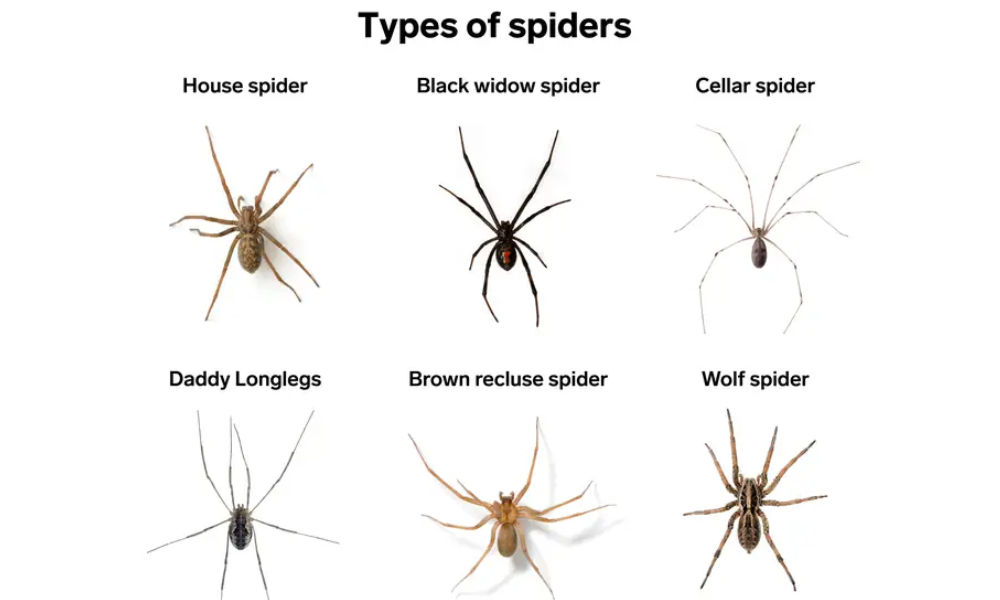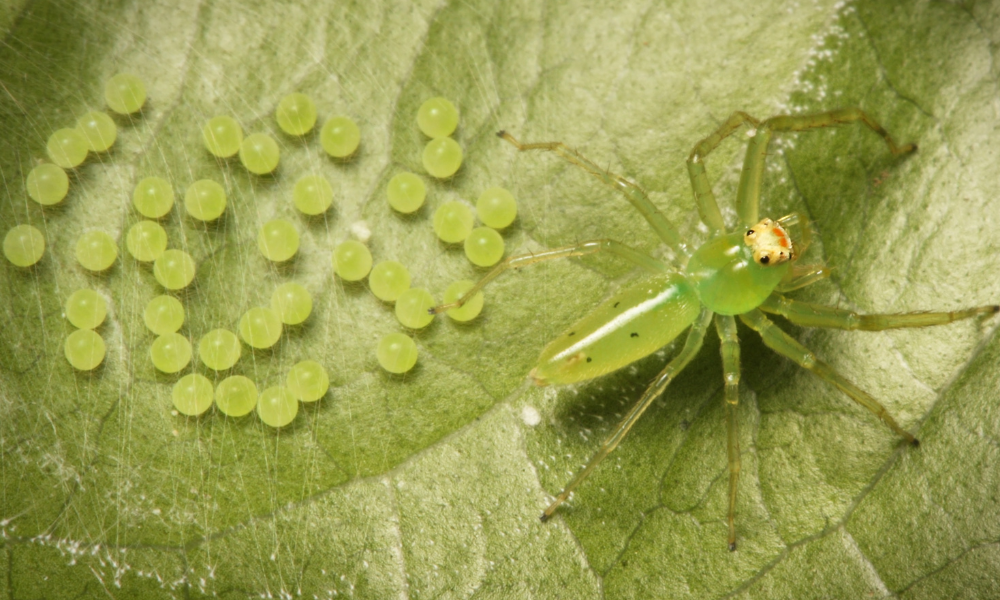Why do spiders evoke such fear in us? Is it their silent movements, their eight-legged stance, or the unexpected places they appear?
Understanding our fears can often bring comfort and ease. So, let's demystify these creatures that share our homes.
In this journey, we aim to dispel some of the unease surrounding our eight-legged companions. Let's delve into the world of the grey house spider and seven other common indoor species, uncovering their secrets so you can live in peace.
What are spiders? Is a spider an insect?
Spiders, with their multiple eyes (in pairs) and eight legs—not six—lack antenna, making them technically not insects. Boo! Did that surprise you as much as stumbling upon a spider in a dimly lit corner?
Here’s what’s unique about spiders:

- Spiders breathe with a dual system. Spiders possess a unique respiratory system, a blend of lungs and tracheae that sets them apart in the animal kingdom. Picture this: While we rely solely on our lungs for breathing, spiders (Araneae) harness both their book lungs and a network of tracheae. These tracheae, tiny tubes funneling air directly through openings known as spiracles, allow spiders to breathe in a way no other creatures do.
- Spiders can ingest silk. The orb spider recycles the amino acids that make up the silk proteins of its web by simultaneously ingesting the silk and dismantling their damaged web every day.
- Not all spiders make webs. Around 50% of spiders build webs to catch their prey. While only half of spider species weave webs for hunting, their designs vary widely—from the delicate orb webs to the intricate funnel webs that house multiple generations.
- Spider’s silk is a lifeline. It can be used as a safety line when escaping predators, to hold an underwater air supply—for water spiders—and to disperse spiderlings to wherever their new homes will be.
How many spiders are in your home (and on earth)?
At Dr. Killigan's, we're all about the fascinating (and sometimes hair-raising) world of our eight-legged housemates. Now, you might be wondering just how many spiders are cozying up in your living room as we speak. Well, the answer isn't straightforward, but here's a mind-boggling tidbit to ponder: for every one of us, there's a bustling community of about 3 million spiders. Yes, you heard that right!
And for a little extra thrill, consider this: if spiders decided to switch their diet to humans, they could theoretically consume the entire human population in less than a year. Sounds like something out of a horror movie, doesn't it? Studies by Martin Nyffeler and Klaus Birkhofer show that spiders munch on 400-800 million tons of prey each year. That's a staggering amount, easily enough to include every last one of us, along with our friends and families. So next time you spot a spider in the corner, remember – it's part of a vast, global network of nature's most efficient pest controllers.
What are common house spiders?
Common house spiders are usually seen in the autumn months when males leave their webs in search of females. The term "common house spider" describes numerous different types of spider species worldwide and those (commonly) found in and around human dwellings. Here, I will discuss nine that are common in North America.

- Yellow sac spider, Chiracanthium inclusum: These small spiders, measuring at about 1/4 inch in length, are pale yellow. They are a global species. Notable features: Long, slender legs; nocturnal; often encountered on walls or ceilings inside homes.
- Brown house spider or False widow, Steatoda grossa: These spiders measure 1/4 to 3/8 of an inch and have dark brown coloration. Commonly distributed in southern and western U.S. states, they are found in secluded indoor areas. Notable features: Resembles a smaller, less dangerous version of the black widow; constructs tangled webs.
- American house spider, Parasteatoda tepidariorum: With a body length of 1/4 to 3/8 inches, this cobweb spider varies from brown to gray. Notable features: Builds messy, irregular, cobweb-type webs in corners and windows; common across North America.
- Cellar spider, Pholcus phalangioides (Daddy Long-Legs): Recognizable by their pale color and long legs, these spiders create scruffy webs in damp, dark areas. They are commonly seen in basements and cellars across the U.S. Notable features: Known for their shaky movement when disturbed; construct loose, irregular webs.
-
Domestic house spider or Barn funnel weaver, Tegenaria domestica: Typically found in outdoor structures and crevices of homes, this spider has a brown color. Size varies but they are generally medium-sized compared to other house spiders. Notable features: Builds funnel-shaped webs; swift runners.

- Giant house spider, Eratigena atrica: This large spider, found mainly in Washington and Oregon, can have a leg span of up to 4 inches. It prefers dark, moist areas and is brown. Notable features: Very large; fast runners; builds large sheet webs with a funnel retreat.
- Hobo spider, Eratigena agrestis: This spider has a brown body with a distinct pattern on its abdomen, measuring up to 2 inches including leg span. It is most prevalent in the Pacific Northwest. Notable features: Builds funnel webs near the ground; commonly misunderstood as aggressive.
- Southern house spider, Kukulcania hibernalis: Predominantly found in the southern U.S., males are light brown and measure about ½ inch in body length, while females (larger and darker), measure up to an inch without including their leg span. These spiders prefer warm, dry environments and are commonly found around windows, in attics and under eaves. Notable features: Sexual dimorphism in size and color; females rarely seen as they stay in webs.
- Grey house spider, Badumna longinqua: Native to Australia and now common in California and Florida, this medium-sized spider can measure up to ¾ inch in body length. Notable features: Harmless to humans; secretive and seldom seen.
7 ways to identify which spiders you have in your home
Identifying common house spiders in your home can be a nuanced task, but focusing on distinctive features can help. Here's what to look for:
- Leg-to-body proportion: Observe the spider's legs with its body size. For example, Yellow Sac Spiders have proportionately long, slender legs, while Domestic House Spiders possess more robust, thick-set legs.
- Leg hair: The texture and appearance of leg hair vary significantly among species. Domestic House Spiders often have visibly hairy legs, whereas the Yellow Sac Spider's legs are smoother.
- Body hair: Spiders display a range of body hair types. The Southern House Spider, for instance, may exhibit fine, velvety gray hairs on its abdomen, contrasting with the Hobo Spider's more spiny-legged appearance.
- Coloration and markings: Pay attention to color patterns and any unique markings. A Brown Recluse has a notable violin-shaped marking on its back, while Black Widows are recognized by their shiny black color and red hourglass figure on the underside.
- Web type: The web's structure can also provide clues. Orb Weavers create intricate, circular webs, indicative of their presence, whereas Funnel Weavers construct flat, sheet-like webs with a funnel retreat.
- Habitat preferences: Knowing where a spider prefers to reside can aid identification. Cellar Spiders are often found in damp, less frequented parts of homes like basements, while American House Spiders prefer the upper corners of rooms and windows.
- Behavioral traits: Some spiders, such as the Jumping Spider, exhibit unique behaviors like jumping.

In identifying the type of spider, you’ll want to ensure you do not have a brown recluse, black widow or a hobo spider in your home, as these are the three most venomous spiders in North America. They have fangs and venom that can penetrate (aka bite) human skin.
- Brown recluse spiders, Loxosceles reclusa. They have tell-tale violin shapes on their backs, a medium brown body, brown legs and six eyes. They prefer warm, dry places, like a shed or woodpile.
- Black widow spiders, Latrodectus. They are a striking shiny black color with a bright red hourglass shape on their abdomens. They have long legs that taper into points and typically dwell in woodpiles and under leaves.
- Hobo spiders, Eratigena agrestis. They are brown with chevron-shaped yellow markings. They make their webs in cracks, corners and holes, and are commonly found in wood piles and other sheltered locations.
How long do spiders live?
A spider’s life span varies greatly, depending on its species and whether we’re talking about a female or male — as female spiders tend to live longer than male spiders. This could be because of genetic strength, as female spiders are responsible for laying eggs and taking care of their young. It could also be because some species of female spiders actually kill or consume their mate after they have finished mating. (In some cases, the female will even catch the male when he attempts to escape.) Many male spiders reach maturity within two years and die after mating.
Here are some spider lifespan examples:

- The common house spider (Achaearanea tepidariorum) lives for about 1 year.
- The common Barn funnel weaver (Tegenaria domestica) has a life expectancy of up to 7 years.
- Black widow spiders (Latrodectus) can live for up to 3 years.
- Tarantulas (Theraphosidae) can live anywhere from 10-30 years.
- Male wolf spiders (Lycosidae) often live no more than one year; however, their female counterparts can live several years.
- The average trapdoor spider (Ctenizidae) lives 5-20 years, though the world’s oldest spider was a trapdoor spider—and lived to be 43.
Fun fact: Male spiders of the species Thanatus fabricii bite and tie up their female partners with silk before mating to avoid being eaten.
Is it good to have some spiders in my house?
A house-dwelling spider provides free year-round pest control, taking care of other pests such as mosquitoes, flies, fleas and even cockroaches. I’m not suggesting that you allow them to freely take up residence in your home, but I am saying that there is wisdom in allowing the occasional spider—neither dangerous or aggressive—to live in your basement or attic, (where you or any house guests are least likely to have 1:1s with them).
Fun fact: Spiders are their own fiercest competitors, often engaging in deadly battles with kin for dominance, leading to dramatic fluctuations in their numbers – one day you might find a bustling community, and the next, only the fattest victors remain.
3 reasons to keep the occasional spider
- They feed on common indoor pests. One spider can eat 2,000 insects in one year.
- They help curtail disease. These diseases can be transmitted to humans and our beloved pets.
- They get rid of one another. The most common long-legged cellar spiders (daddy long leg) are known to kill black widow spiders.
Fun fact: The huntsman spider (which is different from the giant huntsman spider), American house spider, and jumping spider have all been known to eat cockroaches.
How to get rid of spiders in the home

Some folks are not only scared of spiders, but consider the spider itself as scary. We all try to avoid experiences that make us feel uncomfortable. If spiders make you feel uncomfortable, I suggest using our Insect Buster. Filled with Dust to Dust, an alternative to diatomaceous earth, this super-quality, single-purpose, must-have tool will help eradicate many pests, including ants, wasps, and spiders.
Dust to Dust employs silica to break down the delicate wax layer that covers insects' exoskeletons. This wax coating is critical for these bugs as it helps prevent the loss of water from their bodies through the exoskeleton. The breakdown of this layer leads to the spider's death — through dehydration.
Directions: To effectively use Dust to Dust with the Insect Buster Bulb Duster, fill the bulb with the powder. Gently tap the sides —to settle the powder — and then lightly squeeze to puff Dust to Dust into areas where spiders are active or may enter, such as corners, crevices and window sills. For best results, ensure the areas are dry and lightly coat surfaces where spiders are likely to crawl, ensuring they come into direct contact with the powder.










